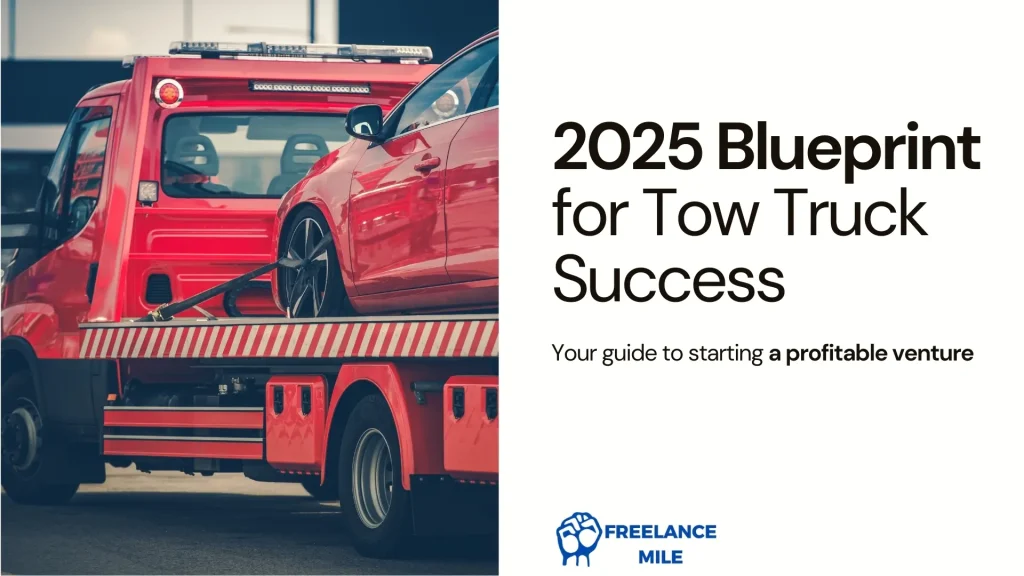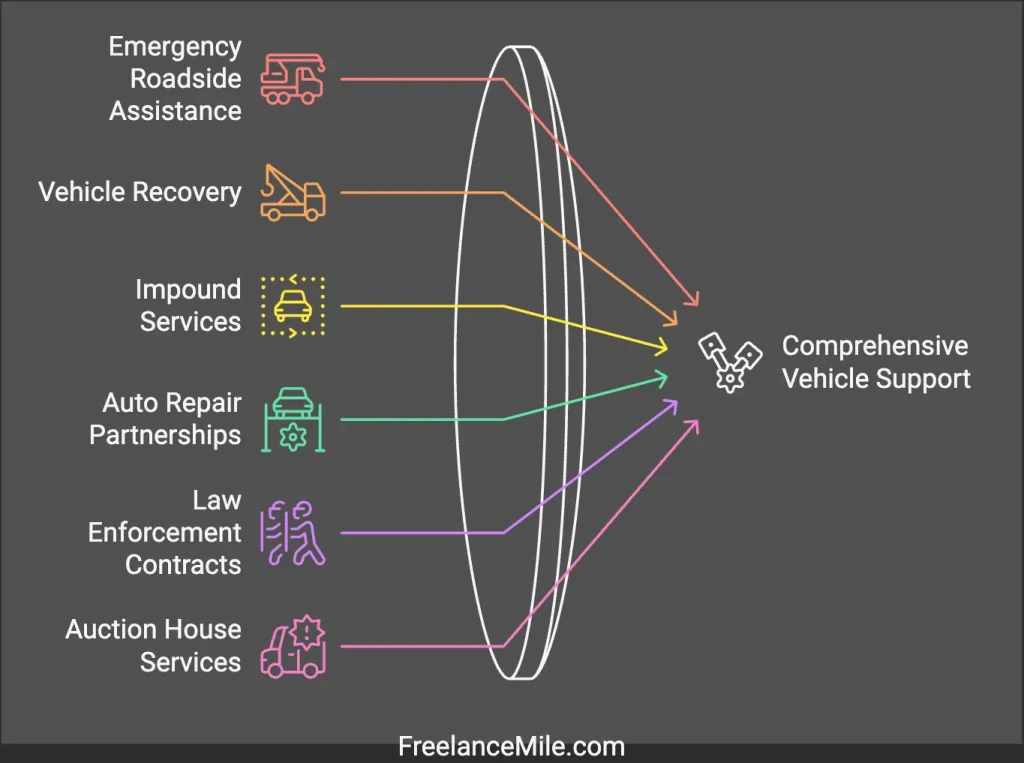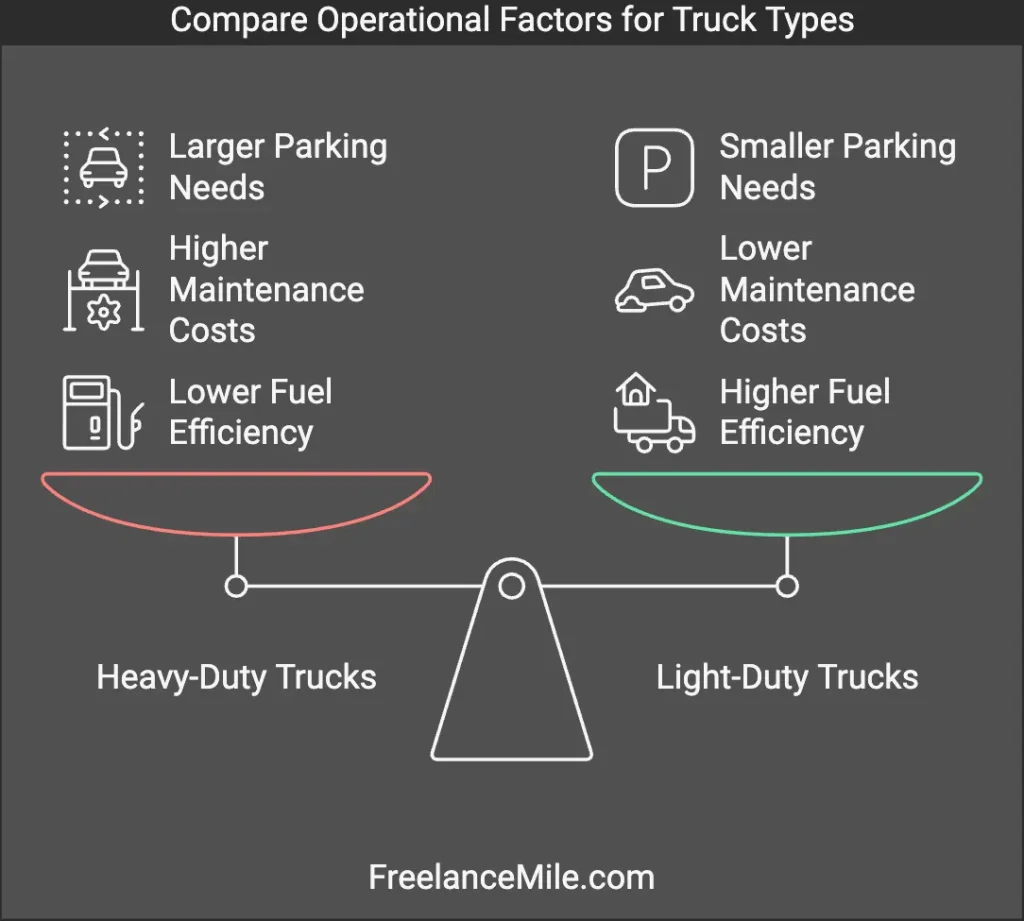The towing industry presents a lucrative business opportunity for entrepreneurs willing to navigate its complex requirements and operational challenges. Starting a tow truck business demands careful planning, substantial capital investment, & a thorough understanding of legal requirements and market dynamics.
Key Takeaways
• The towing industry is projected to reach $10.01 billion in revenue by 2029, offering significant business potential.
• Initial investment ranges from $150,000 to over $1 million, with tow trucks costing between $40,000-$100,000 per vehicle.
• Insurance costs consume approximately 10% of operational budget, with premiums increasing 100-150% industry-wide.
• Successful towing businesses require diversification of services, including emergency assistance, vehicle recovery, and impound services.
• Technology integration and route optimization are crucial for maintaining competitive advantage and operational efficiency.
How to Start a Tow Truck Business

Starting a tow truck business needs careful planning & execution.
Here’s a comprehensive breakdown of the necessary steps & considerations:
Initial Planning
Market Research
The towing industry is projected to generate over $10.01 billion in revenue by 2029. Before launching, thoroughly analyze local market conditions, competition, and demand for towing services in your area.
Business Plan Development
Create a detailed business plan that includes:
- Executive summary
- Company description
- Target market analysis
- Financial projections
- Marketing strategies
- Operational procedures
Legal Requirements
Business Registration
Choose a business structure, typically either:
- Limited Liability Company (LLC)
- Corporation
- Sole proprietorship
Licensing and Permits
Obtain necessary documentation:
- Commercial Driver’s License (CDL)
- Tow truck operator’s license
- Vehicle towing permits
- State and local business licenses
Financial Considerations
Startup Costs
Major expenses include:
- Tow trucks ($40,000-$100,000 per vehicle)
- Insurance coverage
- Licenses and permits
- Equipment and tools
- Marketing expenses
Funding Options
- Business loans
- Commercial truck financing
- SBA microloans
- Investor funding
Equipment and Operations
Types of Tow Trucks
- Flatbed trucks
- Oversized load tow trucks
- Wheel lift tow trucks
- Hook and chain tow trucks
Service Offerings
Consider providing:

Business Growth
Marketing Strategy
Develop comprehensive marketing plans including:
- Online presence
- Social media marketing
- Local advertising
- Partnership building
Insurance Coverage
Secure necessary insurance:
- Liability insurance
- Commercial auto insurance
- Workers’ compensation (if employing others)
Target Markets
Potential Clients
- Individual vehicle owners
- Auto repair shops
- Law enforcement agencies
- Private parking facilities
- Fleet management companies
Remember that success in the towing industry requires not just initial setup but also ongoing commitment to quality service, safety compliance, and business development.
What Are the Most Common Challenges Faced by New Tow Truck Businesses
Here are the major challenges faced by new tow truck businesses:
Operational Challenges
Labor and Staffing
- Difficulty recruiting and retaining qualified drivers due to competition from services like Uber and Amazon
- High employee turnover due to dangerous working conditions
- Rising payroll costs, increasing at 9.12% annually
- Need for specialized training and licensing for operators
Insurance Issues
- Dramatic premium increases of 100-150% even for accounts with no claims
- Commercial insurance rates growing at an average of 19% industry-wide
- Insurance costs consuming approximately 10% of operational budget
Safety and Risk Management
Equipment and Technical Challenges
- Need for specialized equipment to handle different vehicle types
- High maintenance costs for tow trucks and equipment
- Risk of damage to towed vehicles during operations
- Requirement for constant equipment updates and maintenance
Safety Concerns
- Approximately 60 tow truck operators die annually from roadside accidents
- Challenging weather conditions and difficult terrain navigation
- Need to work in hazardous roadside conditions
Financial Challenges
Cost Management
- High startup costs ranging from $150,000 to over $1 million
- Rising fuel prices and operational expenses
- Significant overhead costs including utilities and maintenance
- Increasing minimum wage requirements affecting profit margins
Customer Service
- Managing customer expectations during stressful situations
- Need for prompt response times and clear communication
- Handling payment collection and potential payment disputes
- Dealing with disgruntled vehicle owners, especially during repossessions
These challenges require careful planning, adequate capitalization, and strong risk management strategies to overcome successfully.
How Can I Ensure My Tow Truck Business Remains Profitable Despite Rising Operational Costs
Rising operational costs can be managed through strategic approaches to maintain profitability in your tow truck business. Here’s a comprehensive strategy:
Revenue Optimization
Pricing Structure
- Implement tiered pricing based on service type and distance
- Maintain competitive rates while ensuring adequate profit margins
- Focus on direct customer calls rather than motor club dispatches for higher margins
Service Diversification
- Offer subscription-based services for recurring revenue
- Expand into specialized towing services
- Provide 24/7 emergency services for increased revenue potential
Cost Management
Operational Efficiency
- Implement GPS tracking and dispatch software to optimize routes and reduce fuel consumption
- Monitor vehicle usage and maintain preventative maintenance schedules
- Track cost per mile to identify areas for improvement
Technology Integration
- Use towing management software for automated invoicing and scheduling
- Implement real-time tracking to improve response times and service efficiency
- Utilize digital tools for inventory and asset management
Business Development
Customer Relations
- Build direct relationships with customers to reduce dependency on third-party services
- Maintain high service standards to encourage repeat business
- Develop partnerships with local businesses for steady referrals
Financial Management
- Monitor and analyze profit and loss statements regularly
- Review supplier contracts periodically for better rates
- Consider fleet size optimization to reduce overhead costs
Cost Reduction Strategies
Insurance Management
- Implement safety protocols to potentially reduce insurance premiums
- Train drivers in safe operating procedures
- Maintain detailed records of inspections and maintenance
Resource Optimization
- Evaluate fleet size and composition regularly
- Consider used vehicles when upgrading equipment
- Invest in routine maintenance to prevent costly repairs
What Technological Solutions Can Help Optimize Route Planning for Tow Trucks
Modern route optimization software offers several key features to enhance tow truck operations and efficiency:
Core Features
Real-Time Tracking and Management
- GPS tracking for live vehicle monitoring
- Dynamic route adjustments based on traffic conditions
- Automated dispatch management for efficient job allocation
- Real-time ETA calculations and customer updates
Route Optimization Capabilities
- AI-driven planning to reduce fuel consumption and travel time
- Consideration of vehicle capacity and road restrictions
- Automated scheduling of mandatory breaks and rest stops
- Territory-based planning to prevent overlap in service areas
Advanced Functionalities
Business Intelligence
- Performance tracking and analytics
- Cost-based route calculations
- Data-driven recommendations for improved efficiency
- Historical data analysis for better planning
Operational Tools
- Automated customer communication
- Digital invoicing and payment processing
- Mobile apps for drivers with turn-by-turn navigation
- Integration with existing business systems
Software Options
| Software Type | Best For | Key Features |
| InTow Suite | Integrated Services | Dispatch management, invoicing, impound tracking |
| Omadi | Customization | Reporting, GPS tracking, job scheduling |
| Webfleet | GPS Tracking | Route optimization, fleet monitoring |
The execution of these technological solutions can lead to substantial improvements in operational performance, customer satisfaction, & overall profitability.
How Can I Effectively Market My Tow Truck Business to Attract More Customers
Here’s a comprehensive strategy to market your tow truck business effectively:
Digital Marketing Essentials
Website Optimization
- Create a mobile-responsive, professional website showcasing services and pricing
- Implement local SEO strategies to improve search rankings
- Include clear contact information and service areas
- Design specific landing pages for different services
Online Presence
- Claim and optimize Google My Business listing
- Maintain active profiles on review sites like Yelp
- Run targeted Google Ads for immediate visibility
- Create engaging content addressing common towing challenges
Social Media Strategy
Content Creation
- Share behind-the-scenes content of operations
- Post customer testimonials and success stories
- Create short-form videos for TikTok and Instagram Reels
- Showcase your fleet and team in action
Community Engagement
- Respond promptly to comments and messages
- Share local community updates and news
- Post emergency tips and vehicle maintenance advice
- Build relationships with local audiences
Traditional Marketing
Vehicle Branding
- Design eye-catching truck wraps with clear contact information
- Include company logo and services offered
- Ensure visibility during day and night operations
Local Partnerships
- Build relationships with auto repair shops
- Partner with insurance agencies
- Establish connections with car dealerships
- Create referral programs with incentives
Customer Retention
Service Excellence
- Implement a customer feedback system
- Encourage satisfied customers to leave reviews
- Respond professionally to all feedback
- Create loyalty programs for repeat customers
Community Involvement
Local Presence
- Participate in community events
- Sponsor local activities
- Support charitable causes
- Network at industry events
Remember to track the performance of every marketing channel & adjust strategies based on performance metrics.
How Do I Determine the Right Type of Tow Trucks for My Business
Selecting the right type of tow trucks requires careful consideration of your business needs and market demands. Here’s a comprehensive analysis:
Types and Applications
Flatbed/Rollback Trucks
- Best for general-purpose towing and roadside assistance
- Ideal for damaged vehicles and luxury cars
- Safest option as vehicles are completely off the ground
- Price range: $30,000 – $80,000 used, $75,000 – $130,000 new
Wheel-Lift Trucks
- Suitable for tight spaces and urban environments
- Efficient for quick towing operations
- More affordable entry point
- Price range: $15,000 – $60,000 used, $50,000 – $100,000 new
Integrated/Heavy-Duty Trucks
- Essential for commercial vehicle recovery
- Capable of handling buses and large trucks
- Higher revenue potential per job
- Price range: $100,000 – $300,000 used, $200,000 – $650,000 new
Business Considerations
Market Analysis
- Evaluate local demand for different towing services
- Consider competition and service gaps
- Assess typical vehicle types in your area
Operational Factors
- Fuel efficiency: Heavy-duty trucks consume 3-5 mpg vs. 8-10 mpg for light-duty
- Maintenance costs vary significantly by type
- Storage and parking requirements
- Driver licensing and training needs

Fleet Composition Strategy
| Vehicle Type | Best For | Initial Investment |
| Flatbed | General Service | Medium |
| Wheel-Lift | Urban Areas | Lower |
| Integrated | Commercial | Highest |
Start with versatile equipment like flatbeds for general service, then expand based on market demands and business growth.
What Are the Best Financing Options for Starting a Tow Truck Business
Here’s a comprehensive breakdown of the best financing options for starting a tow truck business:
Traditional Bank Loans
Advantages
- Lowest interest rates (4-10%)
- Terms of 1-5 years
- Best rates and terms for established businesses
- Structured repayment plans
Requirements
- Good credit score
- Well-established business documentation
- Strong collateral
SBA Loans
Features
- Interest rates: 6-8%
- Terms: 7-25 years
- Government-backed security
- Can be used for working capital, equipment, and supplies
Equipment Financing
Benefits
- Uses tow truck as collateral
- Rates: 6-20%
- Terms: 1-10 years
- 100% purchase financing available
- Next-day funding options
Lease Options
Types
- TRAC Lease: Lower initial payments with final balloon payment
- $1 Buyout Lease: Own equipment after all payments plus $1
- Equipment Finance Agreement: Direct ownership with regular payments
Alternative Financing
| Type | Interest Rate | Best For |
| Mid-Prime Loans | 8-25% | Lower credit scores |
| Asset-Based Loans | 10-20% | Real estate collateral |
| Equipment Leasing | 6-20% | Flexible equipment needs |
Start-Up Requirements
Qualification Criteria
- Minimum 600 credit score
- Business license or active business entity
- No bankruptcies in last 7 years
- Personal guarantees from all owners
The best choice relies on your specific circumstances, credit history, and available collateral. For most new businesses, equipment financing or leasing options provide the most accessible path to getting started.
Conclusion and Future Outlook
The towing industry is poised for continued growth and technological transformation. With increasing vehicle complexity and urbanization, demand for professional towing services will likely expand.
The future success of towing businesses will depend on adapting to emerging technologies, managing rising operational costs, and maintaining service quality. Companies that embrace automation, sustainable practices, and customer-centric approaches will likely dominate the market in the coming years.









